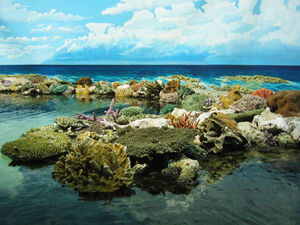
Great Barrier Reef feels after-effects
Monday 29 October 2012
Great Barrier Reef feels after-effects

The health of coastal ecosystems will need to be improved to boost the health and resilience of the Great Barrier Reef, according to a new three-year study.
The Great Barrier Reef Marine Park Authority (GBRMPA) has released the Informing the Outlook for Great Barrier Reef coastal ecosystems report which details coastal land use changes and their impact on water quality, habitats and inshore biodiversity in the Marine Park.
GBRMPA Chairman Dr Russell Reichelt said the report provides land managers, governments and researchers with a better understanding of the extent to which sensitive and complex coastal ecosystems have changed over many decades, the impact on coral cover, and priority actions needed to halt the decline.
“The Australian Government’s Reef Rescue program is doing good work in this area with thousands of farmers reducing farm run-off into the Reef. However this latest study confirms that if we want to protect one of the world’s best-known natural icons and improve its ability to withstand multiple pressures, then we all need to act faster," Dr Reichelt said.
“To achieve a healthy Great Barrier Reef, we need to improve the health of coastal ecosystems because, as this study shows, what happens on land is having an impact out at sea, particularly if it reduces water quality.”
Dr Reichelt said seagrasses, the coastline, estuaries, freshwater wetlands, grasslands, forest and rainforests are just some of the 14 coastal ecosystems which are important to the way the Reef works.
“Clearly, the main pressure on these ecosystems is changes in land use. Our environmental understanding and management of these areas has improved considerably over the past five decades, however the Reef is still feeling the after-effects of decisions and actions taken many years ago.
“There is a real opportunity to build on much of the good work happening in our catchments by protecting environments that are still intact, such as those on Cape York, while re-establishing and restoring coastal environments and habitat corridors, and providing more natural flows of water.
“Importantly, we need to reverse the processes that have led to coastal ecosystems becoming progressively broken up into smaller isolated patches with little or no connection to other ecosystems that many species depend upon.”
Information from the study will be used in the strategic assessment currently under way and as a basis for the next Outlook Report which provides a five-yearly update on the state of the Reef.
Dr Reichelt said while coastal planning was outside of GBRMPA’s jurisdiction, the agency would continue to work with the Queensland Government and local councils, scientists, industry, Traditional Owners and communities to build the Reef’s resilience.